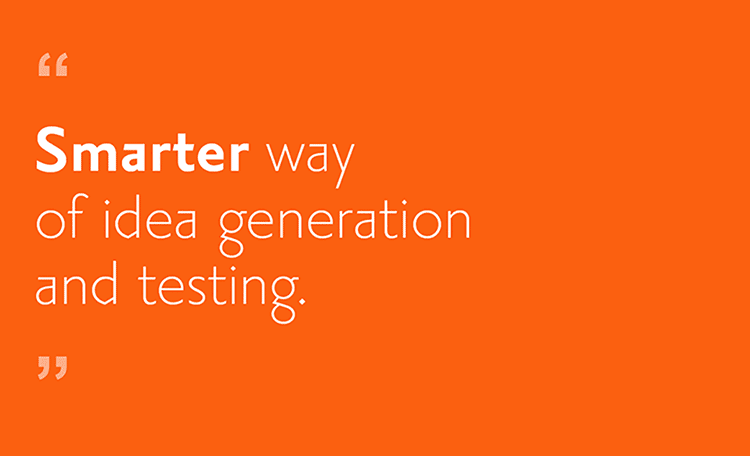Innovation is crucial to staying ahead of the competition and achieving long-term growth. However, it’s not always easy to navigate the complex journey towards successful innovation. We’ve compiled a list of the top nine critical elements we’ve learned from our experience. From understanding your target audience to involving key stakeholders and optimizing concepts with your consumers, these tips will provide you with actionable insights to help you maximize your success in your innovation journey. Keep reading to learn more about the essential components of successful innovation work.
1. The Fuzzy Front End can be uncomfortable.
This is often where clients begin their innovation journey. It’s okay to be unsure at this point in the process. Recognizing this and successfully navigating these early questions, conversations and decisions is critical as it anchors, guides, and fuels the entire innovation journey.
2. Successful Innovation work requires a keen understanding of the WHO.
Getting through the Fuzzy Front End requires a clear understanding of WHO you are innovating for and whose life you are trying to improve with your innovation. A full understanding of that WHO is important so you can keep their needs, behaviors, and attitudes in mind while developing innovation to delight them.
3. True innovation solves a problem.
The research involved leading up to developing new innovative products and services should be structured to solve an unmet or under-served need or should be disruptive enough to change consumer behavior.
4. Involving key stakeholders from the beginning maximizes success.
It is critical to have stakeholder alignment from the start to confirm that the right boundaries have been defined for the scope of the project. Additionally, it is vital to clearly understand upfront the criteria they will use to measure the success of your future innovation.
5. Don’t underestimate what you already know.
So much valuable knowledge can be unearthed through reading past research studies and/or conducting stakeholder interviews. The key is to discover what we know today, and then identify what gaps in understanding we need to fill through new research.

Explore our approach to innovation. Visit our Innovation Sprint™ page.
6. Understanding both category/industry trends as well as key competitors is a critical first step in the innovation process.
These actions force an innovation team to take a step back and gain a broader perspective and appreciation of the context for where their future innovation product/service will reside.
7. Don’t underestimate the value of a small improvement to an existing product or service.
Not all innovation has to be transformational. Even slight modifications or adding incremental benefits to an existing product/service can be valuable and relevant in improving people’s lives.
8. Optimize concepts with your consumers/customers before quantitatively testing.
We have learned that one of the best ways to save time, money and team stress is to conduct a qualitative round of concept refinement and optimization with consumers/customers to maximize the future success of the concepts in quantitative testing. This round of qualitative testing ensures the concepts are clearly understood, use consumer-friendly language, and are tied to a relevant insight. This step in the process will ensure your concepts go into quantitative testing with the best chance of success.
9. Activation within your organization is key to getting the full value out of your research.
Quantitative and qualitative research are the muscle and skill that help you play the game. Motivating a cross-functional team to engage, internalize, and act on the learnings ensures you can move the ball down the field to the successful launch of your innovation. New product/service development relies on an Activation mindset from the start to ensure a successful launch.
Would you like to have a conversation about a fresh approach to innovation?
Contributors: Shari Aaron, Shayna Beckwith, and Joanne Suh




